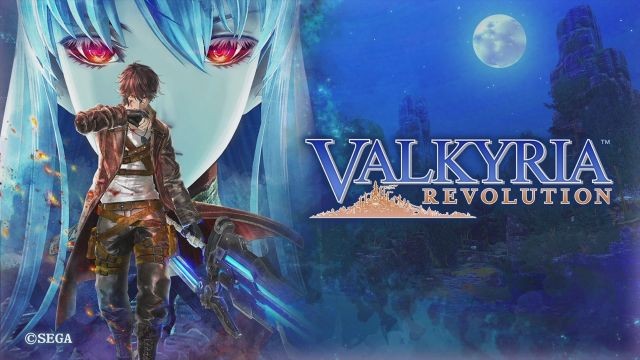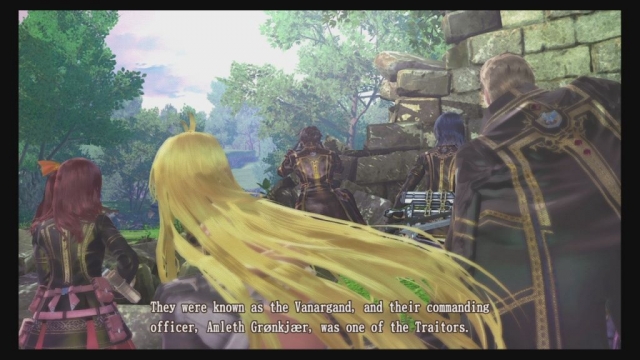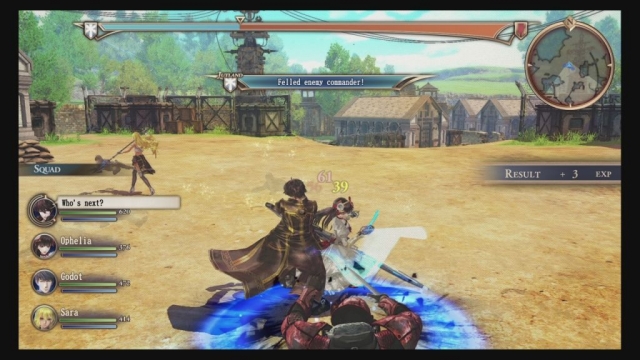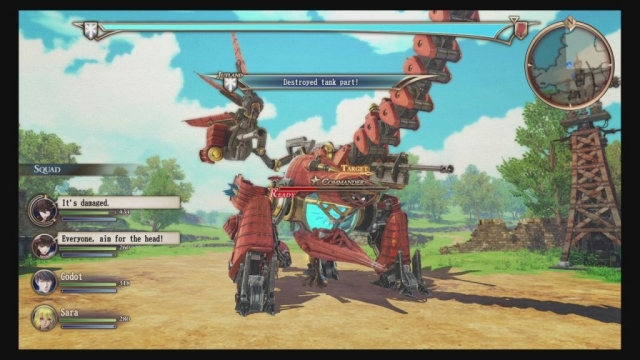Valkyria Revolution

The Valkyria Chronicles series has been one of Sega’s brightest stars over the past decade. Debuting on the PlayStation 3 in 2009, it offered up a gorgeous watercolor art style and a dramatic story that blended third-person shooting and tactical RPG mechanics. It was a tactical game, but one that used third-person shooting as a gateway for those who normally aren’t into tactical games, and wove both gameplay styles together while also telling a fairly in-depth love story that focused on the characters and their motivations.
Valkyria Revolution is an offshoot of the Chronicles games, and focuses more on a world war in Jutland that has broken out due to magical mana, and uses alchemy as a key to the story. The land has been torn apart with varying opinions about who is to blame for the war, and various academics have taken sides on it. Many believe things on a surface level, with “the traitors” being labeled such for apparently starting a war and being found guilty of treason – but leading to unforeseen prosperity. A student wants to know more about history and asks his professor, with a family lineage to the revolution, to tell him more – bringing us a heavy emphasis on story to go alongside the combat.
Revolution focuses less on the love of a relationship and more on love for a nation and your cause – with turncoats being given a sense of true character. There’s backstabbing throughout the tale, but everything plays out logically depending on the viewpoint of the character. Comparing Revolution to the Chronicles games, Revolution features a far more in-depth storyline and it won’t be for everyone. If you want something that focuses more on combat than story, it can be a bit jarring. Revolution’s pacing is a bit uneven in that regard.
Battles generally take shape with a series of missions after several long story sections and then time spent buying items and other supplies to ensure you have enough to win tougher battles. Revolution is a forgiving game because it gives you a solid amount of side missions to complete beyond just the story-centric ones, but there isn’t quite as much variety as something like Final Fantasy Tactics – which gave you side battles to complete, but mixed up the battlegrounds nicely. Here, you have a few side missions you can complete at any one time, but you can only replay those same missions.
In a way, this isn’t a bad thing since each mission type focuses on different things. If you go for every mission type a few times, you will eventually get use to efficiently destroying light tanks, larger enemies, using teamwork to win, and learn how to best destroy large swarms of enemies in a single battle. Boss battles test your mettle in new ways and you will always want to come into major battles with plenty of healing items just in case. You can never be too prepared and in this regard, the game is far more forgiving than Chronicles was.
However, the biggest shift from Chronicles to Revolution is in the combat. While Chronicles was a third-person shooter melded with a tactical RPG, Revolution is an action RPG with both shooting and sword-fighting mechanics depending on which characters you send into battle. Pressing down on the d-pad allows you to switch roles whenever you want – so if you are stronger with a long-range character, but begin with a short-range melee specialist, you can easily switch between them. Sometimes, you will want to mix up different attack styles within a single battle. It allows you to go after more enemies in an efficient manner and lets you learn how each character plays. Some are super-short range and require far more finesse to excel at than a character with more range that is more forgiving for missed attacks.
Figuring out which kind of attack style works best for each battle is a big key to victory. If it’s your small army against a large one, then going in with a sword-heavy team is smart because you can take out a few enemies fairly swiftly since they generally crowd together. Conversely, if you’re facing large tank-led armies, a mixture of styles is best because you can use the long-range guns to wear down the tank while your sword-users take turns on the regular goons and work on the damaged limbs of the tanks. While the action-heavy shift may upset some, I found it to be a welcome change of pace – even if the actual story doesn’t do as much for me as the one featured in Chronicles. There, playing through everything in real-time helped a lot, whereas this game frames everything as a historical retelling of events – hurting some of the narrative.
Visually, Valkyria Revolution manages to both looks impressive and hold itself back a bit. Much like other Vita and PS4 releases, like God Eater Burst, the PS4 version retains a border around the core gameplay that makes things feel a bit cheaper than they should. The game never quite fills the screen and it seems like corners were cut to ensure that texture quality didn’t vary too wildly from version to version. Up-close, things like wooden crates look rather muddy, but the core characters do look impressive with nice flourishes when it comes to texture work on clothing and facial expressions. Animations are hit and miss – with running and gunplay looking good, but sword slashes look a bit iffy and frequently seem to be missing frames of animation.
Musically, Revolution features outstanding voice acting and a stirring soundtrack. While the included OST with the physical first run version is limited, it does at least allow you to enjoy the music in a high-fidelity format. The music has a lot of depth to it and goes for a slow pace to build up the drama, while up-tempo tunes are used for fast action and large boss battles. The acting is impressive and never delves into melodrama, even if some of the roles are a bit too barren for the cast to sink anything into. The sound effect work is also impressive, with slashes feeling different depending on the type of blade you’re using, and that holds true for gun variants as well.
Overall, Valkyria Revolution does many things differently than Valkyria Chronicles and will be quite divisive. As a fan of Chronicles, I found that game to be better overall and yet the faster pace of Revolution makes this more fun to play – the story just doesn’t hold up as well and the graphics are less impressive here than Chronicles. The action RPG shift works at keeping things interesting on the battlefield at all times and keeps you on your toes too. It does suffer from some iffy textures, but the game is greater as a whole than the sum of its parts. It’s a fantastic gateway game for the franchise for newcomers and offers veterans a completely new gameplay experience in many ways while also keeping some elements similar enough to make for a smooth transition.
Reviewed By: Jeremy Peeples
Publisher: Sega
Rating: 90%
——————————————————————————–
This review is based on a digital copy of Valkyria Revolution for the PlayStation 4 provided by Sega.
 Game Over Online
Game Over Online
















